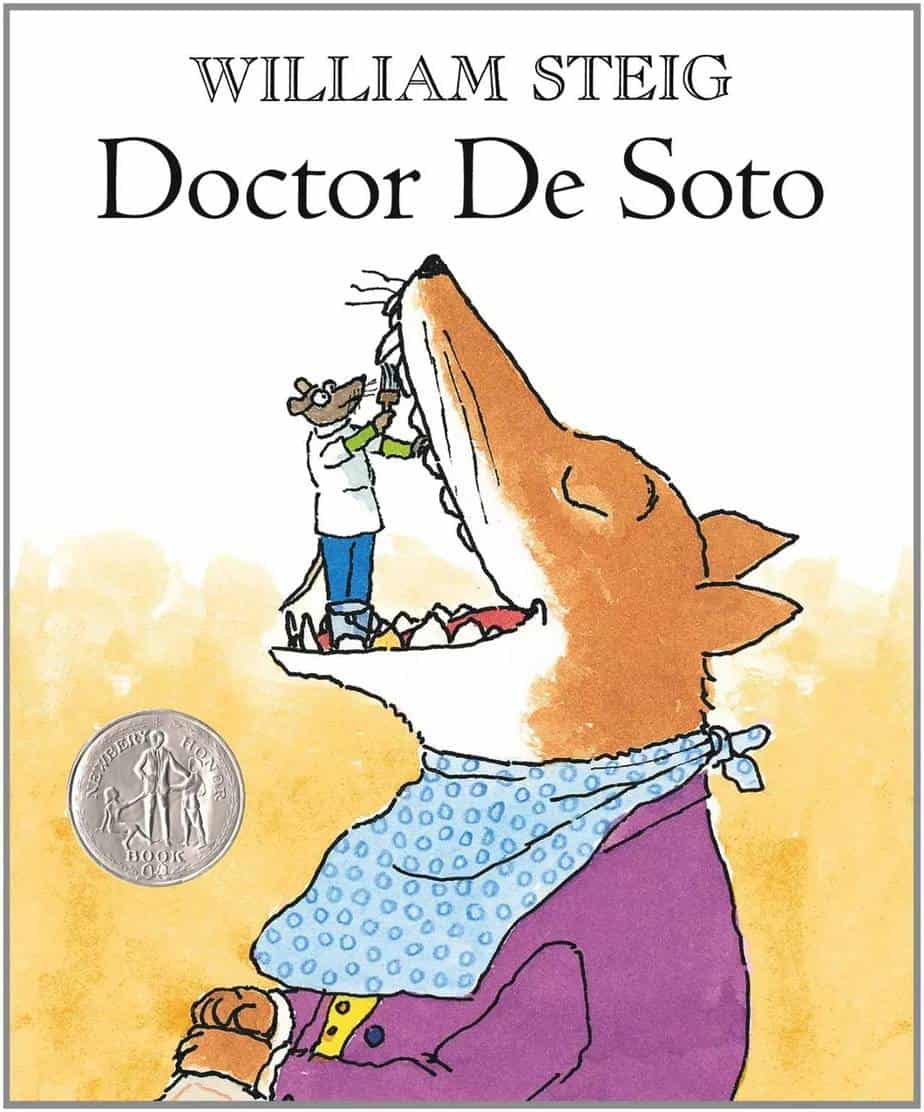Doctor De Soto is an example of a picture book that owes a lot to Aesop, with the characterisation of the mice and the fox already firmly in place. Mice don’t play as prominent part in the fables as you might think, but foxes are one of the main five, along with countrymen, dogs, donkeys and lions.
That said, there have since been many, many stories about mice in 20th Century children’s literature.
There’s a good reason why Dr De Soto is a mouse and not a rat:
Mice are widely represented in folktales, both as protagonists and as helpers. Apparently, there is a subconscious identification on the part of children’s writers of a small and helpless child with one of the smallest animals, also know–maybe without reason–for its lack of courage. While rats are in many children’s stories presented as ruthless enemies, mice–in reality similarly harmful–are portrayed as harmless and sympathetic. The emblematic meaning of animals in art and literature deserves special attention there is an enormous diversity between cultures. However, in most ancient mythologies, mice are chthonic animals, worshipped as powerful and benevolent towards humans.
Maria Nikolajeva, From Mythic to Linear: Time in Children’s Literature
There are also shades of fairytales in here, such as The Gingerbread Man. Readers will already know that tale, and therefore know how very perilous it is to approach a fox’s mouth end. Dr De Soto is obliged to jump right in.
THE NAME DE SOTO
I wondered if ‘De Soto’ had any significance.
There is a famous Hernando De Soto in American history — a Spanish explorer born at the end of the 1400s. I can’t say for sure if Stieg intended readers to make any connection to this historical figure, but I do note that Hernando de Soto’s North American expedition ranged throughout the southeastern United States searching for gold. Enter, the possibly symbolic gold tooth? Like Hernando, the mouse dentist is undertaking a perilous task.
But the similarities end there, really. Unlike the mouse, the historical figure was not someone known to bring peoples together.
De Soto was instrumental in contributing to the development of a hostile relationship between many Native American tribes and Europeans. When his expedition encountered hostile natives in the new lands, more often than not it was his men who instigated the clashes.
Wikipedia
STORYWORLD OF DOCTOR DE SOTO
I don’t know about you, but 1982 doesn’t feel that long ago to me. That is, until I pick up a children’s book published in 1982 and realise that in 2016 good publishers are no longer putting out stories about professional men and their assistant wives. We might even say that picture books are even ahead of the culture in this regard; in our village the pharmacist indeed has an assistant who happens to be his wife, but it’s great that we’re moving at least smashing the glass ceiling in picture books, mostly.
As is usual in stories, it is the female character’s compassion which puts the goodies in a dangerous situation in the first place.
“Please!” the fox wailed. “Have mercy, I’m suffering!” And he wept so bitterly it was painful to see.
“Just a moment,” said Doctor De Soto. “That poor fox,” he whispered to his wife. “What shall we do?”
“Let’s risk it,” said Mrs De Soto. She pressed the buzzer and let the fox in.
Doctor De Soto, William Steig
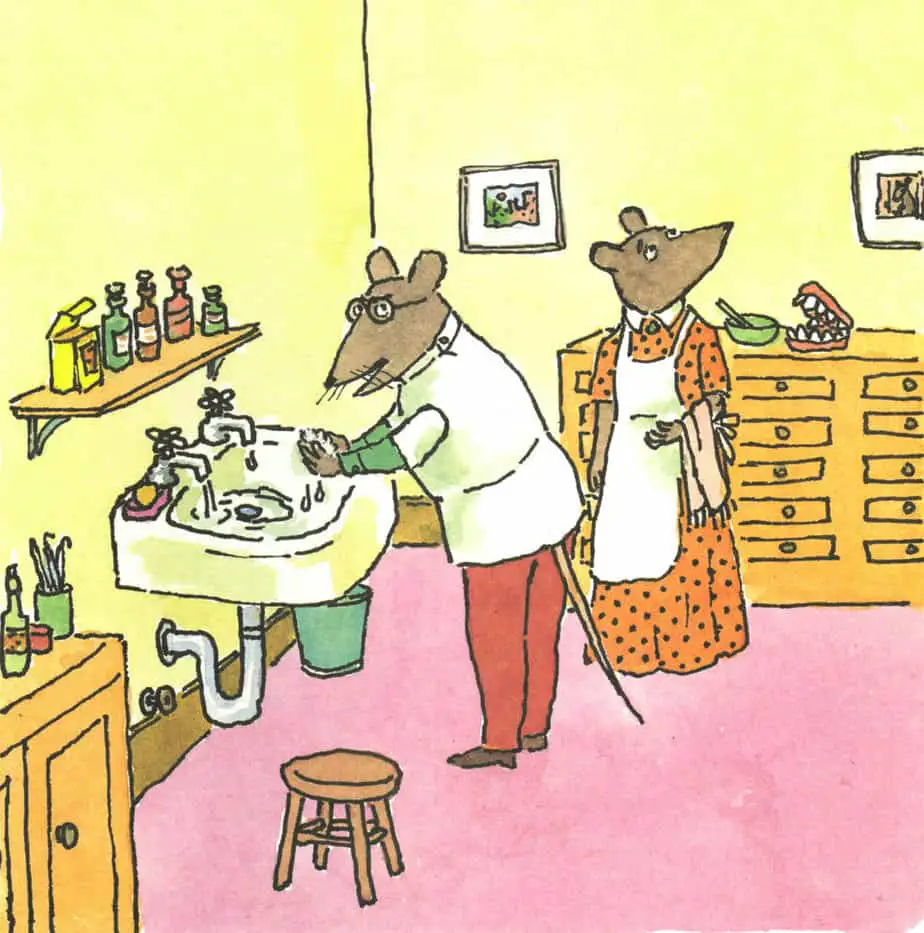
That’s not to say we aren’t clinging on to traditional gender roles by rehashing without much in the way of re-visioning the same old fairytales with their conservative gender roles.
This is a tale of miniatures, in which tiny animals have rigged workarounds to exist in a world much too big for their bodies.
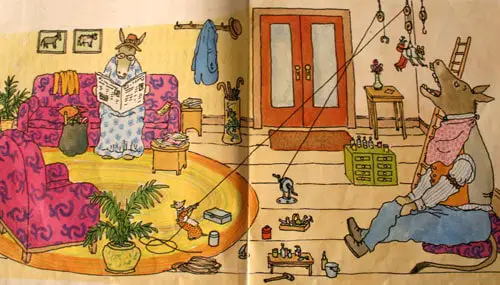
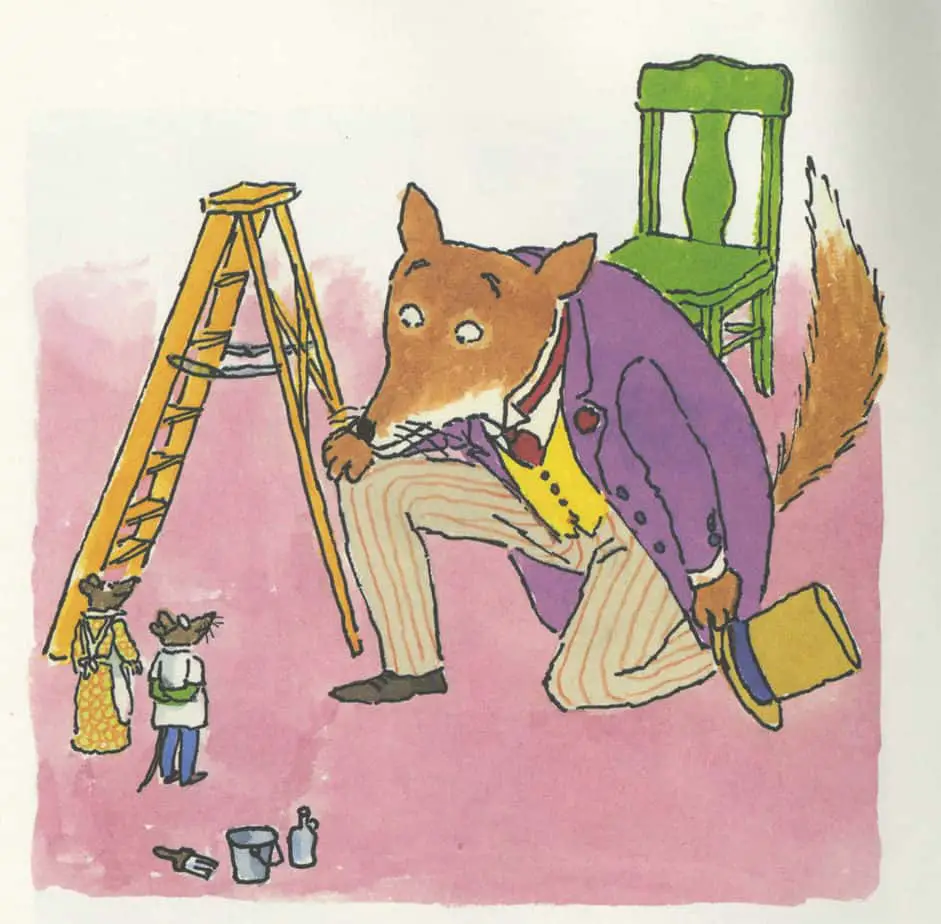
STORY STRUCTURE
SHORTCOMING
Like all mice in children’s books, the De Sotos’ main shortcoming is their small size. They need to use their wits in order to survive against predators.
DESIRE
The De Sotos want to help others by mending teeth and keeping pain at bay. They are an altruistic pair.
OPPONENT
The fox, whose natural inclination is to eat mice.
Part of the humour of this story comes from the (adult) reader’s real-life experience of a dentist. Dentists are known to regularly request a wider mouth. Dr De Soto does the same, but here it’s because the fox really wants to eat the dentist, not because his mouth is simply getting a bit tired!
We see the power of this mighty opponent foreshadowed in the details of the illustration, for example the fanged dentures sitting on the bench in the dental surgery.
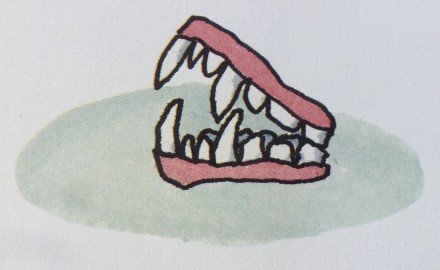
We’re also got humour in the Freudian idea that when a patient is under the gas and muttering nonsense, that this nonsense dream is somehow an insight into their true thoughts. So when the fox mutters “Mmm, yummy,” the mice are clued into his intentions.
PLAN
We don’t see what the De Sotos’ plan is — instead we see them lying awake in bed worrying about it.
BIG STRUGGLE
Since the reader isn’t in on the plan, the fox’s return for his gold tooth is fraught with tension. Stieg amps up the tension by having the fox comically chomp down ‘as a joke’.
SELF READER-REVELATION
As it turns out, the De Sotos glue the fox’s teeth shut and this will last a good few days.
The reader realises that even if you are powerless you can run on wits.
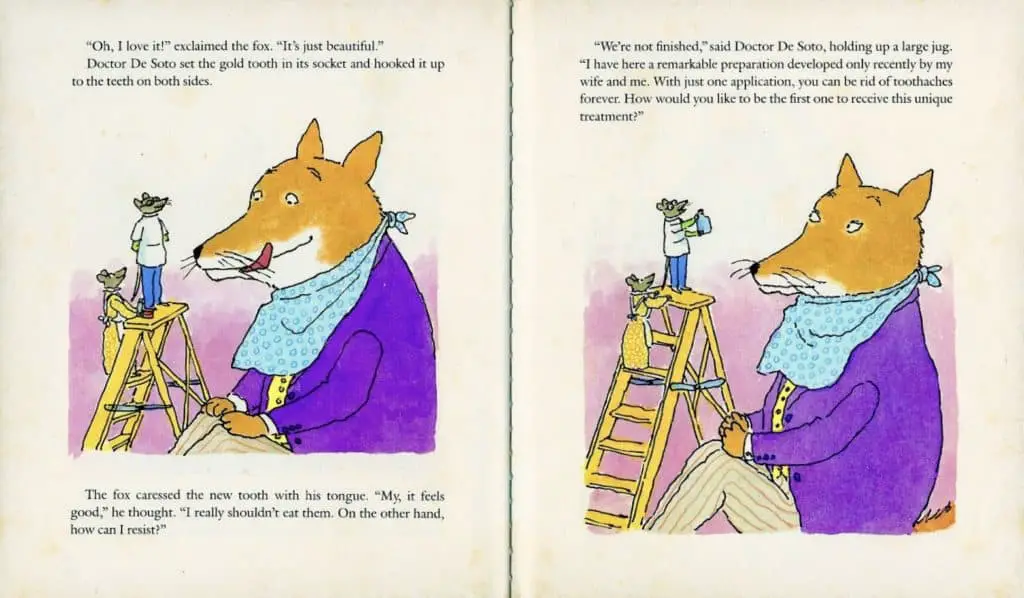
NEW SITUATION
Doctor De Soto and his assistant had out-foxed the fox. They kissed each other and took the rest of the day off.
Implied after the story ends: The fox is able to open his jaw in a few days’ time, but by this time he is well enough away from the mouse dentists that his natural instincts allow him to leave them alone to continue their good work.
Note that altitude is symbolic in this final image — the fox is on his way down (in power) while the small mice stand at the top, as if on a victory podium.

